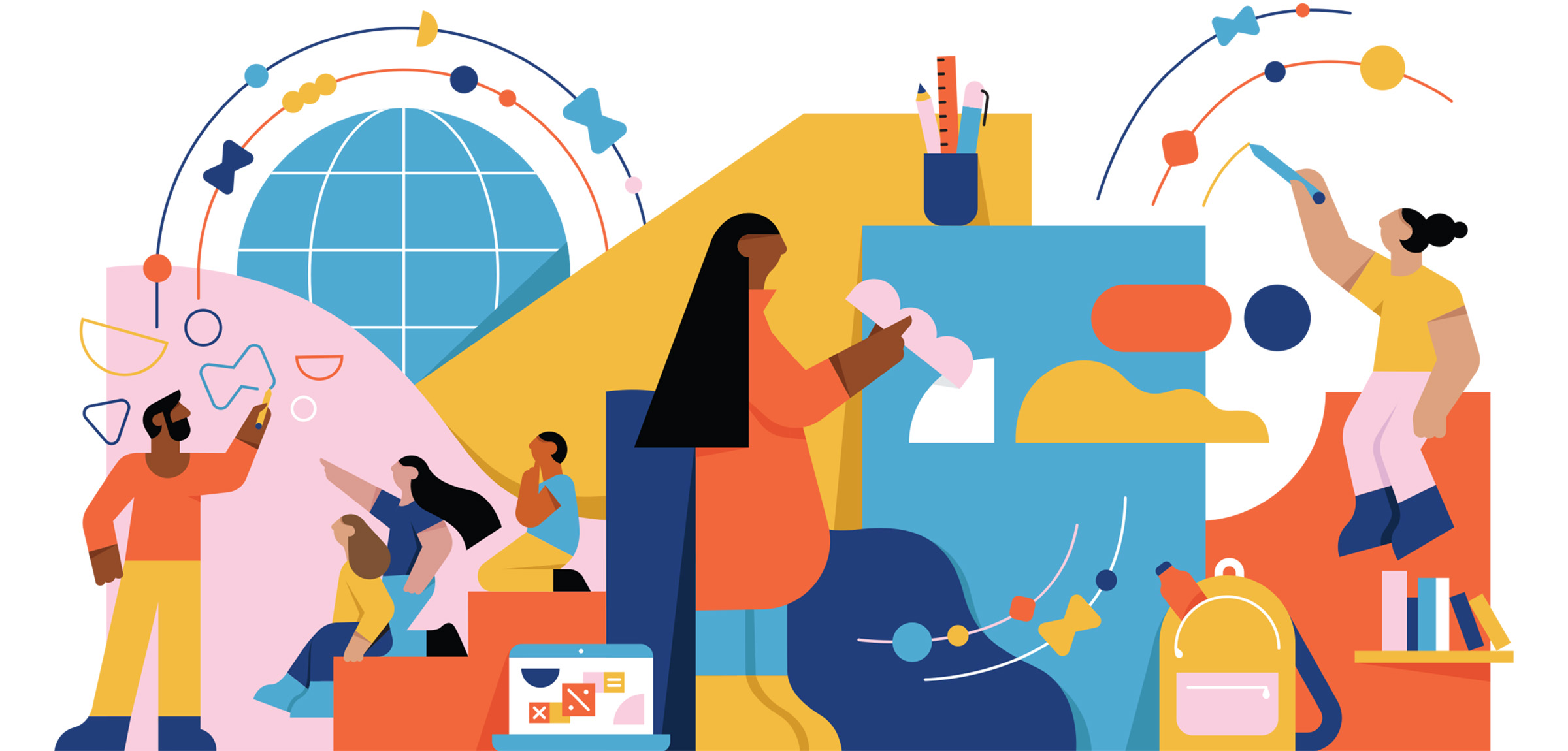“Women belong in all places where decisions are being made. … It shouldn’t be that women are the exception.”
— Ruth Bader Ginsburg
Charles Fourier may have coined the term féminisme as long ago as 1837 (The Feminism Book 2019), but the gender gap persists, especially for women in leadership positions. Globally and here in Canada, women have a long way to go to achieve gender parity and equity. Using conceptual structures developed by scholars, this article will explain why women are not experiencing parity in the workforce.
The COVID-19 pandemic set back the progress for women on several indicators of equity according to the Global Gender Gap Index. The World Economic Forum developed the index in 2006 “to benchmark progress towards gender parity and compare countries’ gender gaps across four dimensions: economic opportunities, education, health and political leadership” (2023, p. 9). In 2021, the pandemic increased the gender gap by a generation from 99.5 years to 135.6 years” (Lacey and Bricker 2021). While this measure improved in 2023, the World Economic Forum found that “at the current rate of progress, it will take 131 years to reach full parity” (p. 5). Currently, Canada’s gender gap sits at 77 per cent, down 0.2 percentage points from 2022, and the country ranks “30th of 146 countries surveyed in terms of gender parity” (World Economic Forum 2023, p. 11).
The United Nations Development Programme (UNDP) and its 2023 Gender Social Norms Index, covering 85 per cent of the global population, found that “close to 9 out of 10 men and women hold biases against women” (p. 3). The UNDP also notes that “gender inequality is stark in positions of leadership” (p. 10) at a global level.
Since the 1970s, scholars have examined gender parity in leadership roles to explain the barriers women experience (Diehl et al. 2020). Early studies considered gender stereotypes and role expectations for men and women, using terms such as the glass ceiling – “… a situation in which women cannot, in spite of aspiring to, attain leadership positions in their careers” (Everitt 2020, p. 1). The glass ceiling is an invisible barrier for women in the workplace, but it is not at the same height for every woman because of the multiplier effect of combining gender with other identities such as race and disability. Scholars such as Crenshaw (1989) have called for closer examination of the “intersectional experience [because it] is greater than the sum of racism and sexism” (p. 140) as well as other identities. Although the glass ceiling is useful to understand the barriers women face ascending to leadership roles, it alone cannot explain what the barriers are, what their impact is and what can be done to remove them.
In 2002, Eagly and Karau formulated a helpful conceptual framework for understanding discrimination against women in the workplace. Their framework, called role congruity theory, “reaches beyond social role theory to consider the congruity between gender roles and other roles, particularly leadership roles” (p. 575). They proposed two forms of prejudice that female leaders face: 1) women are not favourably evaluated as potential leaders “because leadership is more stereotypical of men than women” (p. 576); and 2) a “less favorable evaluation of the actual leadership behavior of women than men because such behavior is perceived as less desirable in women than men” (p. 575). Women are expected to demonstrate communal characteristics such as affection, helpfulness, sympathy and nurturing, while men are expected to show agentic characteristics such as confidence, ambition, independence and competition. These gendered stereotypes become prejudicial to women who wish to lead because “social perceivers typically construe leadership roles in agentic terms, whereas they expect and prefer that women exhibit communal characteristics” (Eagly and Karau 2002, p. 578).
The durability of gendered expectations as explained by role congruity theory in the workplace can be found in a recent, large-scale study. Benson, Li and Shue (2022) studied promotions for nearly 30,000 workers who were on a management track at a North American retail chain and found that “women receive lower potential ratings and higher performance ratings than men. The gender gap in potential ratings accounts for up to half of the overall gender gap in promotions” (p. 2). In other words, even if women outperform men, women are rated lower as potential leaders. The authors of this study point to a biased evaluation system and call for a re-examination of this system.
Role congruity theory can also be used to help understand leadership in the teaching profession. Bush (2021) noted that “teaching is a feminised profession in most parts of the world, but the proportion of [female] principals is almost always lower than that of classroom practitioners” (p. 861). The pathway to leadership for men within feminized professions was explored by Williams in 1992. She found that men, “despite their intentions … face invisible pressure to move up in their professions. As if on a moving escalator, they must work to stay in place” (p. 256). Williams, playing with the idea of glass as a transparent material, called the lifting of men into leadership roles the “glass escalator.”
A more diverse leadership core allows for multiple perspectives, and this builds resilience for organizations to expand what is possible.
The implication of the glass escalator in feminized professions like education, where the basic qualifications are the same, is that men are provided with pathways to leadership and encouraged to be leaders. Those women who reach leadership positions must “engage in behaviors that put men at ease, such as showing meekness and refraining from competitive behavior, to navigate the institutionalized gender dynamics of their workplaces” (United Nations Development Programme 2023, p. 14). Women who do not conform or fit in are not provided with access to leadership opportunities because of normative gatekeeping by those — usually men — in power.
Finally, it is important to understand that the “exclusion [of women] is consequential. At a time of heightened uncertainty, worsening climate challenges and rising polarization, excluding women from decision making inhibits collective action and closes doors to possible pathways towards addressing shared challenges” (United Nations Development Programme 2023, p. 12). We live in a complex world, and it is vital to expand our leadership talent pool to include women, particularly those who live at the intersections of gender. More diverse leadership allows for multiple perspectives, which builds resilience in organizations and expands what is possible. Understanding our own biases and actively engaging as individuals and organizations are critical to dismantling barriers to leadership opportunities.
References
Benson, A., D. Li and K. Shue. 2022. “‘Potential’ and the Gender Promotion Gap.” Working paper.
Bush, T. 2021. “Gender and School Leadership: Are Women Still Under-Represented as School Principals?” Educational Management Administration and Leadership 49, no. 6: 861–62.
Crenshaw, K. “Demarginalizing the Intersection of Race and Sex: A Black Feminist Critique of Antidiscrimination Doctrine, Feminist Theory, and Antiracist Politics.” University of Chicago Legal Forum 1989, no. 1: 139–67.
Diehl, A. B., A. L. Stephenson, L. M. Dzubinski and D. C. Wang. 2020. “Measuring the Invisible: Development and Multi-Industry Validation of the Gender Bias Scale for Women Leaders.” Human Resource Development Quarterly 31, no. 3: 249–80.
Eagly, A. H., and S. J. Karau. 2002. “Role Congruity Theory of Prejudice toward Female Leaders.” Psychological Review 109, no. 3: 573–98.
Everitt, L. M. 2020. Women in Educational Leadership: Needs Assessment Survey. Edmonton, Alta.: Alberta Teachers’ Association.
The Feminism Book: Big Ideas Simply Explained. 2019. London: DK.
Lacey, N. & D. Bricker. 2021. “The COVID-19 Effect on the Global Gender Gap: Measuring It Is the First Step towards Closing It.” World Economic Forum website, March 31.
United Nations Development Programme. 2023. 2023 Gender Social Norms Index: Breaking down Gender Biases—Shifting Social Norms towards Gender Equality. New York: United Nations Development Programme.
Williams, C. L. 1992. “The Glass Escalator: Hidden Advantages for Men in the ‘Female’ Professions.” Social Problems 39, no. 3: 253–67.
World Economic Forum. 2023. Global Gender Gap Report 2023. Geneva: World Economic Forum, June.



